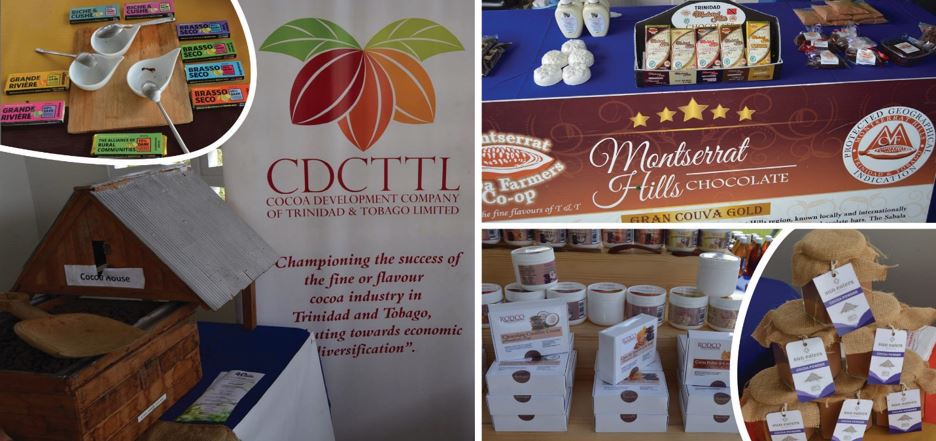IICA, the ministries of Agriculture, Trade and Health, as well as producers and key stakeholders of the private sector, are working to establish this mechanism, which will facilitate continuous dialogue as well as the productive and commercial development of the cocoa sector in the Caribbean country.

of the 40th anniversary of IICA in Trinidad and Tobago.
San Jose, 8 November, 2018 (IICA).The Inter-American Institute for Cooperation on Agriculture (IICA) and the Cocoa Development Company of Trinidad and Tobago (CDCTTL) are supporting a processtp strengthen a Platform for Industry Dialogue. The initiative will bring together producers and public and private stakeholders of the cocoa chain in order to streamline efforts aimed at improving the competitiveness and development of the cocoa sector in the Caribbean nation.
Specialists from the IICA delegations in Trinidad and Tobago, Jamaica, and Saint Lucia, as well as staff members and the Chairman of CDCTTL, Winston Rudder, form part of the team responsible for combining technical expertise and experiences in order to identify practical mechanisms for establishing and managing the platform. The initiative is expected to serve as a key instrument for driving the development of the cocoa chain.
“IICA has reaffirmed its commitment to supporting the expansion and strengthening of the platform, which will facilitate the sharing of strategic information, communication processes and work between CDCTTL and its development partners. This, in turn, will better position the cocoa industry to contribute to the country’s socioeconomic development,” explained Diana Francis, Specialist in Policy and Trade at the IICA Delegation in Trinidad and Tobago.
Additionally, the Chairman of the CDCTTL indicated that “the development of this sector has included the participation of critical stakeholders such as the Ministry of Agriculture, Land and Fisheries; the Ministry of Trade and Industry; the Ministry of Health; the National Export Facilitation Organization of Trinidad and Tobago; the University of the West Indies Cocoa Research Center (UWI-CRC); as well as farmers and processors.”
Rudder highlighted that “the industry’s platforms for dialogue must be inclusive and capable of managing the various interests, priorities and expectations of key stakeholders of the public and private sectors. All interested parties from the cocoa industry are responsible for ensuring that cocoa beans and value-added products are of the highest quality, in accordance with the global reputation of Trinidadian cocoa”.
Over the past two years, Trinidad and Tobago has carried out a number of actions such as fumigating cocoa plantations, providing training sessions for producers on good agricultural practices to improve the quality of cocoa beans, and generating the necessary conditions to transform this sector into a competitive industry. However, the country has identified the need for a platform that could link together and bolster all of these efforts.
Peru’s experience
The International Specialist in Agricultural Innovation at the IICA Delegation in Trinidad and Tobago, kurt Manrique described the successful experiences of other platforms such as the Peru Cocoa Alliance (PCA), a public platform that brings together various interested parties in order to drive the development of the country’s cocoa industry. This mechanism is supported by the U.S. Agency for International Development (USAID).
By January 2019, the European Union will implement a new regulation on cadmium levels in cocoa, which could affect Trinidad and Tobago’s capacity to continue exporting high-value fine and flavor cocoa beans.
For this reason, the UWI-CRC will participate in an upcoming forum in Lima, Perú, on research initiatives aimed at mitigating cadmium in cocoa. The Center, accompanied by a specialist from Ecuador, Colombia, Costa Rica, Trinidad and Tobago and Perú, will present its innovative work in order to contribute to developing solutions to this issue.
More information:
Gregg Rawlins, IICA Representative in Trinidad and Tobago
Lisa Harrynanan, Specialist in Agricultural Health and Food Safety at the IICA Delegation in Trinidad and Tobago











